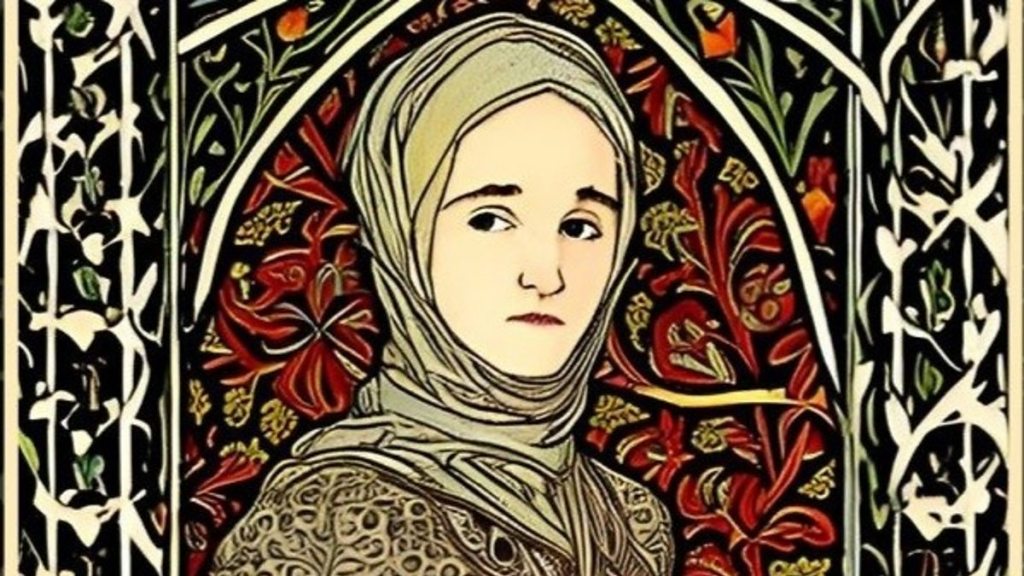
In the compelling story of England’s first female Muslim convert/revert titled Our Fatima of Liverpool, authors Hamid Mahmood and Yayha BIrt open a fascinating window into the last half of the 19th century in Liverpool, England. I knew nothing of Fatima Elizabeth Cates until I received this book, and I was very glad to learn about her. She predated the respected and talented translator of the meaning of the Quran, Marmaduke Pickthall, of whom I have been aware since I converted to Islam in the late 70s.
Through this book, I also learned about William Henry Quilliam, at whose lecture in Birkenhead (on the other side of the Mersey River from Liverpool) Elizabeth, as she then would have been known, heard about the prophet Muhammad, peace be upon him. Learning about the prophet Muhammad (pbuh) was not Fatima/Elizabeth’s reason for making the journey in 1887 that—if it were between Liverpool and Birkenhead–would today be roughly 2 miles by plane or 3 miles by car. However, this little tidbit of murkiness stems from my assumption that Fatima/Elizabeth lived in Liverpool as the title of the book suggests. If she did, then a round trip walk in a single evening would indicate what a determined young woman she was, given British cultural 19th-century standards.
The authors do not say whether she was accompanied or walked alone. Chapter 2 states that she was born in Birkenhead in 1865 where her father, an Irishman named John Murray, worked as a porter at the “newly built and expanding Birkenhead Market” (p.19). Therefore, the walk might have been but that of a few minutes. Perhaps Birkenhead and Liverpool are so close that association with the former means one is from the latter. As a Californian, I don’t know.
I am not sure if Elizabeth Murray (birth name) would have known on the day she set out that the title of the lecture was “The Great Arabian Teetotaller” or even that Quilliam was Muslim. The original title of his lecture, when given two weeks earlier at the Mount Vernon Temperance Hall, was “Fanatics and Fanaticism” based on the theme that those who were part of the Temperance movement were jeered at for being puritanical reactionaries. Surely anyone devoted to a cause understands the comfort of finding solidarity with others who experience rejection for efforts to uphold ideals.
The Temperance movement appealed to devout Christians in the U.K. although it had its roots in the USA. Liverpool, then the second largest port in the British Empire, was riddled with poverty, alcoholism, and the misery that attended both. Fatima/Elizabeth wanted to hear the speech of this 31-year-old Temperance movement leader Quilliam, who had just converted that year to Islam after a visit to Morocco. Born in 1856 (making Quilliam 9 years older than Fatima/Elizabeth and 19 years older than Pickthall, who was born in 1875), Quilliam had already gained some notoriety as “the Temperance child” because he famously took a “pledge to abstain from all alcohol at the age of seven” (p.16). In adulthood, he had already achieved status as a lawyer and journalist.
It so happens that Fatima/Elizabeth (her name hadn’t changed yet) sat right next to Mr. James Hamilton, “a wholesale box maker” and “Quilliam’s first convert” to Islam (p.18). After she expressed an interest in knowing more about the religion that, in theory, created teetotallers, Hamilton encouraged Elizabeth to speak more with Quilliam. Eventually, Quilliam gave the young woman a copy of a translation of the Qur’an, which she took home to read, unleashing a torrent of abuse and misunderstanding from her family towards her. (One of the appendices makes it clear that family members who likely helped impose restrictions and abuse upon Fatima/Elizabeth, including her mother, came to her funeral years later, so the resistance to her conversion must have given way to acceptance, finally.)
Fatima, as she chose to call herself after conversion, was significant in striving for converts to Islam. The authors give well-researched figures. They also expose the horrendous discrimination to which the mosque and its attendees were subject, in detail. I agreed with the comment that one would have supposed a Muslim convert spouse such as Hubert Henry Cates, who converted in 1890 and married Fatima in the same year, would have been a comfort, but Fatima petitioned for a divorce the very next year. Marrying another convert did not protect her from abuse. He was used to violence, and conversion did nothing to quell that proclivity. The authors include that petition in the appendices. Indeed, much of what is found in the appendices is fascinating, as indeed is the final information about the two writers who researched and wrote this valuable book.
Since Fatima Elizabeth Cates is not even listed in Wikipedia, unlike Quilliam and Pickthall, Our Fatima of Liverpool represents the first major documentation that tells much of her story. I truly hope more will be discovered and published about this sister and the community in Liverpool. Readers interested in the spread of Islam inside the U.K. may recognize Beacon Books of London as dedicated to responding to that widespread desire to know more about the same with the company’s publication (re-issuance) of Marmaduke Pickthall, British Muslim by Peter Clark in 2016 and the compilation of Middle Eastern stories titled A Question of Precedence by Marmaduke Pickthall in 2017 among other titles.
